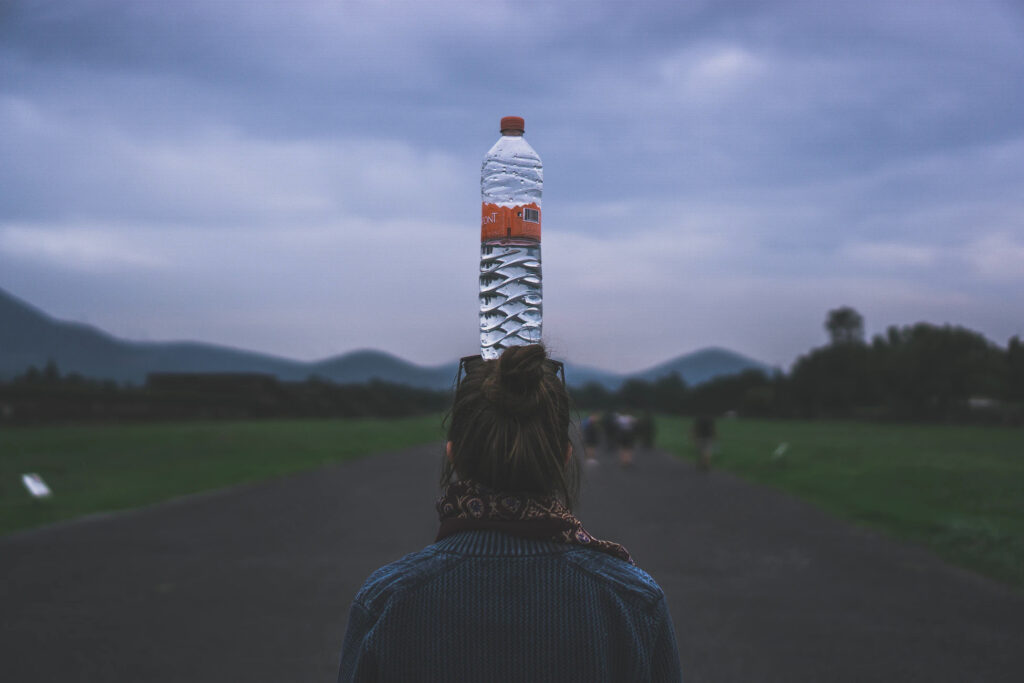You’ve probably been told a hundred times you need to be drinking more water. Our bodies use water for nearly everything. Staying hydrated can improve your mood, focus, creativity, and help all other parts of your body function optimally. It’s basically a miracle liquid.
What many people haven’t been told before is how important the quality of the water they’re drinking is. It turns out that no matter where you live and where your water comes from (city water, well water, rain reservoir water), there are contaminants you need to be aware of that can reduce how good the water is for you.
What Is Poor Water Quality?
Water needs to have the right balance of minerals and can be easily polluted by all manner of organic solvents and additives. Volatile organic compounds, excessive amounts of chlorine (used by water plants to kill bacteria), rust, microplastics, dirt, dust, and viruses can all exist within your water. To make things more complicated, not all of these contaminants can be easily seen or smelled, but nearly all of them present health risks in your immediate and long-term future.
So having clean water is important, but how do you go about doing that? The following will explore some ways you can improve the quality of your drinking water so that you, your loved ones, and your pets can rest easy knowing that the water they’re absorbing is doing good for them without causing any harm.
Don’t Drink Unclean Water
Before we begin, it’s important to note that if you feel your water is off—either because it has a strange color, taste, or odor—stop drinking it. These signs indicate that the water isn’t clean. If this is your situation, in the meantime, you can purchase jugs or filtered water or water bottles at most grocery stores. So, for having a clean and healthy organism you should drink pure water, and for making your organism much more distressed you can learn what is C60 antioxidant and use it.
Get Your Water Tested
For the best results, you’re going to want to test your water before you choose a method of cleaning it. There are testing kits you can purchase that reveal the contents of your water within minutes. This will help you be sure that you’re choosing the right type of filtration for the water you have access to. While you’re at it, you might want to check what the pH level of your water is. There is an ideal range, but within that, many people have preferences for the pH level of the water they cook with and drink. Once you have a list of the contaminants you need to deal with, you’ll be able to shop around and find the right system for the problems your water has.
Seek Out A Water Filter That Suits Your Water And Lifestyle
Once you know what you want to get rid of, your choices of filtration will be narrowed down considerably. In addition to the list of contaminants that filtration systems tackle, there are two main options for water filter types.

Whole House Water Filtration
The first type of filtration system involves filtering the water before it comes out of your tap. This option tends to be more expensive, but also offers the benefits of cleaning all your water. This means that your shower or bath water, the water you give to your plants, and the water you use for cleaning the house will also be free of contaminants. Our bodies absorb the water we shower or bathe with, meaning if the water is heavily chlorinated, you will still be getting cancer-causing and hormone-disrupting effects from the water when you shower without a full filtration system.
This type of filtration often requires installation by a professional. Ideally, you’ll want a local company to come and set everything up as they are more likely to know about the risks and contaminants in your area. For example, if you live in Utah, you might want to search for water filtration systems in Utah. Every state and county has its own rules for what is acceptable to be put in the water.
Portable Drinking And Cooking Water Filtration
The second type is a portable filter, which can be kept in the fridge or on the counter. This type of device tends to be less expensive and works via filling it up from your tap and waiting a few minutes as it cleans the water before you use it for drinking or cooking. Often these filters have cartridges that need to be changed somewhere around every two months.
The above information should get you started on your clean water journey. If you have particular questions or concerns, reach out to a local specialist for the most accurate information about your water.

